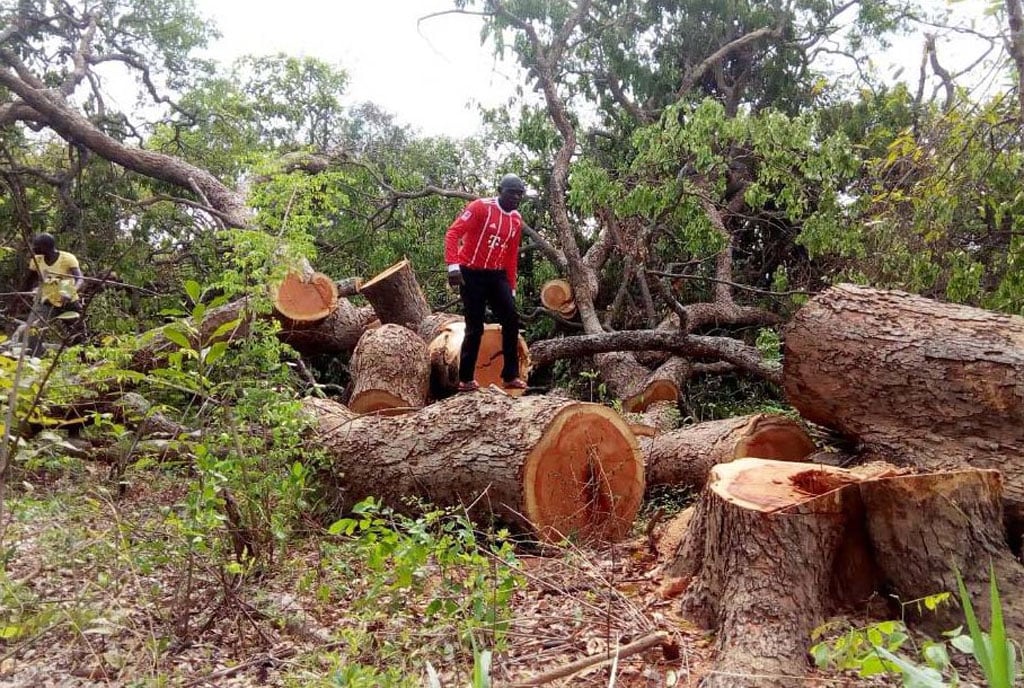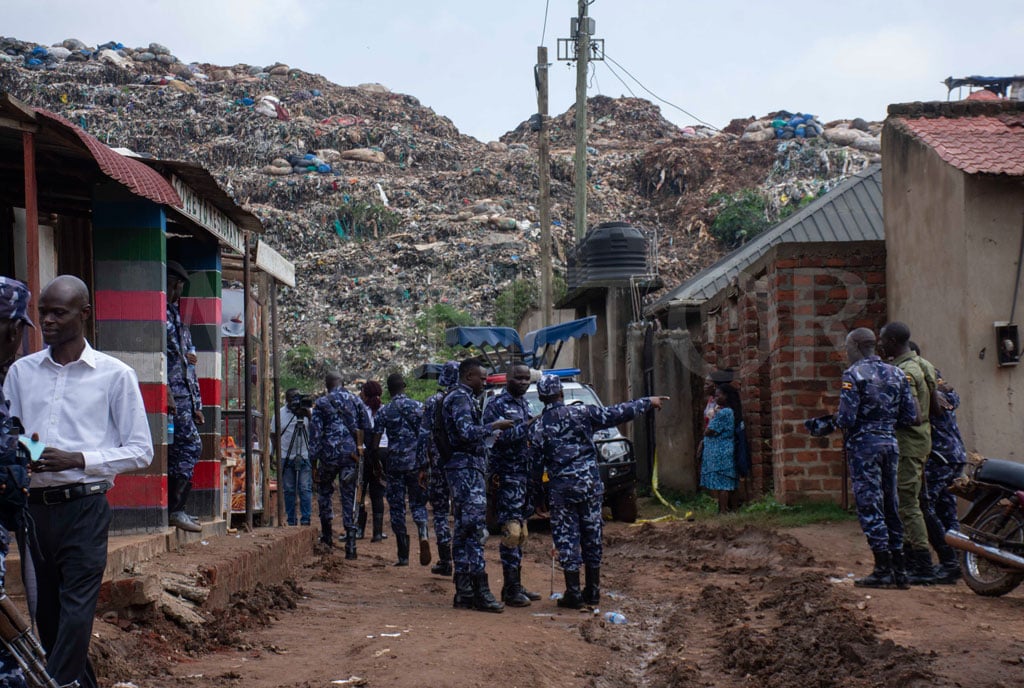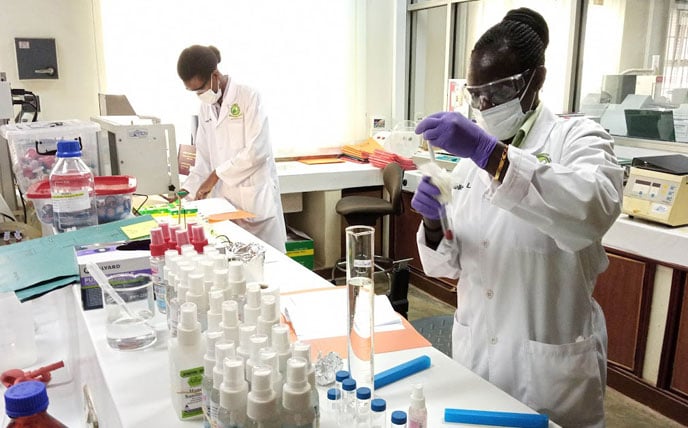
Some of the trees which were cut down in Yumbe District. Farmers in Gbiria Village in Ariwa Sub-county, Yumbe have adopted practices to conserve the environment. PHOTO/ROBERT ELEMA
Climate change might seem distant—until it is at your doorstep. Uganda may not always grab global headlines on this subject, but the reality is stark. For instance, the Rwenzori Mountains’ ice caps have shrunk by 49 percent since 1987 and could disappear by the 2040s, threatening to flood rivers like the Mubuku, Nyamwamba, and Ruimi, according to World Bank Group data. Mount Elgon’s slopes are also crum, leading to landslides that have claimed lives and displaced thousands in areas around.
Droughts in Karamoja have devastated communities, while heavy rains in Kisoro have wreaked havoc. Ranked as the 147th most vulnerable nation, Uganda faces potential climate-driven costs of up to $5.9 billion (Shs21.5 trillion) annually if it fails to adapt, data from the International Institute for Environment and Growth, a sustainability think-tank, shows. This demonstrates that climate change is not just a future worry; it’s already here. Uganda, despite its small carbon footprint, is part of the equation.
What is climate change?
Defined as long-term shifts in temperatures and weather patterns, climate change has natural origins like volcanicity. However, since the 1800s, human activities—particularly burning fossil fuels—have accelerated these changes, according to the United Nations documentation. The World Bank Group and Our World In Data, a project of the Global Change Data Lab, have compiled the available data on this topic.
As of 2022, the average person in Uganda emitted 0.12 tonnes of carbon. This is the highest from the lows of slightly below 0.04 tonnes of carbon per person in 1994 where fossil fuel and industry-related carbon dioxide (CO₂) emissions dominated, hitting 6.02 million tonnes in 2022. Historical responsibility adds to the complexity. Since 1950, Uganda has cumulatively contributed 118.37 million tonnes of CO₂ emissions from fossil fuels and industry—just 0.02 percent of the global total. In contrast, the US and EU alone account for 40.68 percent. Uganda’s emissions are relatively small and primarily stem from oil and cement production, but our carbon footprint extends beyond CO₂. There are other greenhouse gases like methane and nitrous oxide.
To grasp their full impact, scientists use “carbon dioxide equivalents,” adjusting for each gas’s global warming potential (GWP). According to Our World In Data figures compiled from governments and climate change watchdogs, Uganda’s per capita greenhouse gas emissions in 2022 were 1.4 tonnes, a significant decrease from the peak of 8.6 tonnes attained in 1963. This total reflects emissions from agriculture, land use, transport, buildings, waste, and industry. The challenge? Balancing economic growth with reduced emissions demands ‘decoupling’ CO₂ from progress—something that many countries are grappling with.
Since 1990, Uganda’s per capita CO₂ emissions have surged by 194.58 percent, outpacing its gross domestic product (GDP) growth at 152.87 percent. This underscores the uphill battle: Uganda’s emissions have risen faster than economic gains, highlighting the tough road ahead to align growth with a lower carbon footprint.
What are greenhouse gases?
Almost every human activity—commuting, farming, even reading this— emits greenhouse gases, fuelling climate change. These gases, like sulphur dioxide, carbon, and methane, linger in the atmosphere for varying durations. Ms Bernadette Natukwasa, a carbon markets specialist with GIZ Uganda, explains that the ozone layer acts as the earth’s shield against harmful solar radiation, yet human activity has thinned it since the 1990s, fuelling climate impacts. “With rising greenhouse gases, heat that would escape earth is now trapped, driving up temperatures and causing erratic weather,” she notes during a discussion on October 24 hosted by Kalikimitima & Co Advocates on X. This threat, she says, spurred international climate efforts, with the Kyoto Protocol being key, which established carbon markets for global cooperation on greenhouse gas reduction. Carbon dioxide fades quickly, but sulphur dioxide can hang around for decades, making carbon emissions a primary target in climate action and driving the rise of the carbon market.
Why should we care?
Emissions know no borders, impacting the whole planet. Early efforts like the Kyoto Protocol put the onus on heavy polluters, but the Paris Agreement calls for shared responsibility, particularly Article 6.4, which paves the way for global carbon markets to unite in slashing emissions.
So how do carbon markets function? Carbon markets operate like any other, with buyers and sellers, but here the commodity is invisible: carbon credits. Each credit, symbolising one metric tonne of CO₂ reduction, can be traded in two markets: regulated and voluntary. In regulated markets, companies have emissions caps. Exceed the cap? Buy credits. Fall below? Sell them for profit. Governments set limits, allocating carbon quotas based on companies’ past emissions, creating a secondary market for trading. If a firm surpasses its quota, it buys extra units; if it’s under, it can sell.
This system blends regulation with economic incentives to cut emissions, driving innovation while capping environmental harm. Carbon credits range from $12 (Shs44,000) to $125 (Shs457,000) per tonne, with prices fluctuating based on demand, driving firms toward greener alternatives. In the voluntary market, companies can choose to participate. Here, credits are earned by activities that actively reduce CO₂, like reforestation, creating a more flexible option to achieve sustainability goals. Once purchased, credits can’t be reused—avoiding double-counting ensures each offset is unique. This financial cost on emissions nudges firms to reduce pollution affordably, lowering the overall expense of going green.
Forest cover The promise of carbon markets sounds appealing—especially if you have plenty of forest. Countries with more tree cover, like the Democratic Republic of Congo (DRC) with its 70 percent forested land, might reap bigger rewards. In Uganda, forest cover is 15.2 percent, according to the UN’s Food and Agriculture Organisation, a figure that has slumped from highs of around 21 percent in 1990. Carbon markets could help Uganda reclaim that lost cover, but there are challenges. For instance, while government land forests are growing, those on private land are dwindling. And without direct financial incentives, many landowners see little reason to preserve native trees. Uganda’s voluntary carbon market also faces hurdles due to uncertain land tenure, complicating long-term commitments for carbon credits.
But Dr Jibril Owomugisha Semakura, Uganda’s Representative to the UN Decade of Action, urges Ugandans to see carbon reduction beyond just planting trees. “Switching from charcoal to cleaner cooking technologies can cut household emissions,” he notes, adding that even coffee plants help absorb CO₂. The Nema Act mandates polluters in Uganda to actively reduce emissions or support CO₂-absorbing initiatives, making climate responsibility a collective task.
How to tell if a company buying carbon credits is legitimate or just a middleman
Start with its credentials. A qualified company should be licensed by a carbon registry, like those under the United Nations Framework Convention on Climate Change (UNFCCC), ensuring they meet set standards. These registries collaborate with Uganda’s Ministry of Water and Environment to connect farmers and foresters to carbon markets, helping everyone benefit from carbon credit initiatives.
What about the diversity in carbon trade?
A common misconception about carbon credits is that they’re just about tree planting, but emissions come from various sources—waste, energy, transport, and more. “Offsetting can happen in multiple sectors, not just forestry,” says Ms Natukwasa. While trees play a leading role, oth[1]er initiatives—like clean cooking, solar energy, biogas, hydropower, and water purification—also cut emissions significantly. Several projects have already transitioned from the Clean Development Mechanism (CDM) to frameworks under Article 6, with support from the East African Carbon Markets Alliance.
“These projects help clean our air and improve health,” she notes. Ms Natukwasa also counters the belief that carbon markets are just green washing by emphasising that each emission reduction undergoes rigorous calculation and validation. “This isn’t about buying your way out—it’s shared global responsibility,” she says, highlighting how everyone, from developed countries to individuals, must contribute.

Beatrice Anywar, the junior Water and Environment minister
What does carbon pricing look like in Uganda?
Carbon trading is picking up in Uganda, especially in districts like Iganga, Bugiri, and Mbale, where nearly 7,000 sellers are already involved. Yet, transparency around pricing is lacking— many sellers receive just $2 to $5 per tonne of offset, far below the United Nations Environment Programme’s $30 (Shs109,630) to $50 (Shs183,000) average for forest carbon credits in 2023. This gap stems from issues like Uganda’s land tenure system, which fragments land ownership, limiting carbon absorption on smaller plots. The carbon captured by a project depends on factors like the type of vegetation; native species like mangroves, bamboo, and Warburgia ugandensis excel at storing carbon and offer conservation incentives, with bamboo also valuable for furniture.
Ms Natukwasa explains that an effective carbon project should ideally capture around 100 tonnes of CO₂, but regulatory hurdles complicate participation. Brokers also take a share, leaving farmers with reduced earnings. Intermediaries frequently exploit the unregulated market, often to the detriment of farmers and the government is aware of this. In response, it is working to introduce “climate change mechanisms” that would protect fair carbon trade with higher transparency.
Without such policies, the integrity of Uganda’s carbon market is at risk. Past lax practices have led to environmental harm, including tree clearing for coffee production driven by economic, not environmental, motives. Proposed regulations, if approved, could roll out by next year, according to what Beatrice Anywar, the junior Water and Environment minister, said in the East Africa Carbon Markets forum in Kampala in May. Dr Semakura says individuals can, however, benefit from the voluntary carbon market by registering with the Ministry of Water and Environment. This registry will support transparent dealings and prevent credit duplication by assigning each participant a dedicated buyer. He also underscores the potential of soil-stored carbon in organic farming, expanding the ways people can benefit in this trade.
What is government position on all this?
The Ugandan government is taking proactive steps in this emerging carbon market in its borders since it benefits its climate action move. A multidisciplinary climate change mechanism task force has been established under the Ministry of Water and Environment to facilitate Uganda’s participation in voluntary cooperation arrangements as outlined in Article 6 of the Paris Agreement.
The ministry is currently drafting regulations for the carbon market, with support from the United Nations Development Programme (UNDP), to implement Section 9 of the National Climate Change Act of 2021 and ensure compliance with the Paris Agreement. Minister Anywar stated that the drafting of regulations to guide participation in Article 6 is nearing completion. The ministry is also enhancing the capacity of its staff so they can track greenhouse gas-emitting sectors well in managing inventories and addressing reporting and verification gaps.
Any barriers to take note of?
Significant barriers hinder climate innovation at all stages from development to commercialisation, including policy risks, technical challenges, and limited access to long-term financing. Overcoming these challenges requires a multifaceted approach, according to Mr Brian Isabirye, the commissioner for Renewable Energy at Uganda’s Ministry of Energy and Mineral Development, who spoke on behalf of Ms Ruth Nakabirwa, the Energy minister, at a carbon energy conference in Kampala this May. This approach includescreating a supportive environment for climate action, fostering innovation, and aligning finance with sustainable development goals.
How are challenges being tackled?
The Ugandan government is working to establish domestic carbon markets, noting that only 73 global carbon pricing instruments currently cover around 23 percent of emissions—an insufficient scope for meaningful climate impact and equitable trade. To attract private capital for voluntary carbon credits and biodiversity conservation, the Climate Finance Unit—part of Uganda’s Ministry of Finance, Planning and Economic Development— aims to enhance climate financing mobilisation.
Supported by funding from the UK’s Foreign, Commonwealth and Development Office (FCDO) through the Global Green Growth Institute (GGGI), the unit is establishing standards for emission reduction projects that capitalise on Uganda’s extensive forest resources. The idea is that the carbon revenue will be channelled from compliance and voluntary markets into affordable clean-cooking solutions, like pressure cookers and sustainable fuels. This integrated approach, Mr Isabirye says, aims to embed climate finance within national development goals, contributing to Uganda’s and global climate objectives.
Uganda has already updated its Nationally Determined Contributions (NDCs), which aims at improving access to sustainable electricity and promoting renewable energy sources and energy-efficient technologies. The revised energy policy of 2023 acknowledges the importance of universal access to reliable and affordable energy services while encouraging a low-carbon transition in Uganda. As part of its strategy, Uganda’s Energy ministry has developed an integrated energy transition plan that adopts a market-based approach. This plan aims to support the development of standardised baselines for calculating emissions reductions from carbon projects in the energy sector, thereby reducing the costs and time required for the private sector to design these projects.
Can you walk us through the fragmented carbon markets and the impact? One other big challenge here is the fragmentation of the carbon market ecosystem, same as it is globally. The movements of stakeholders across the entire value chain are largely uncoordinated, limiting opportunities for collaboration and effective project development. Despite the vast market potential, the number of project developers in Uganda is limited, predominantly consisting of small-scale operations that offer minimal diversification. Currently, an overwhelming 97 percent of Uganda’s carbon credits are derived from forest and land use, renewable energy, and household devices.
Additionally, Uganda lacks local validation and verification bodies, which are present in neighbouring countries such as Kenya, Egypt, and South Africa. There are currently no country-based exchanges or marketplaces for carbon credits, although the government is working to establish them. Without clear standards for carbon credits, companies may struggle to verify their actual emissions reductions. The existing weak guidance and regulatory options further complicate the development of voluntary carbon markets, contributing to perceptions of a lack of integrity within the market. To address these challenges, the government is focused on enhancing market credibility through the implementation of the Article 6 rulebook of the Paris Agreement, which aims to facilitate effective international carbon markets. Increasing market credibility is expected to improve the efficiency and efficacy of participants and aid in achieving climate goals.
CONTROVERSIES
Carbon trading in Uganda is still taking shape. The market remains a niche, with few studies available due to its complexity and fragmented nature. This lack of structure has led to confusion and controversy, leaving stakeholders navigating a maze of uncertainties. Globally, however, carbon trading has roots as far back as the 1980s. The US launched the first land-based carbon project in 1988 to curb sulphur dioxide emissions. Since then, private companies have invested in carbon projects to offset emissions. Ms Bernadette Natukwasa, a carbon markets specialist, says putting a price on something as intangible as carbon is new territory for Uganda. While some see it as a money-making venture, its real value lies in addressing climate change—a message often lost.
Financial returns are possible, but only with significant investments to meet the market’s strict and sometimes skeptical requirements. “To join effectively, you need a registered project under a recognised standard,” she explains, noting the bureaucratic processes involved, from initial approvals to compliance checks. “There’s also a lack of clarity on when and how participants can benefit. Some may choose direct payments, while others prefer investing in community projects like schools, so these options need clear communication,” she adds








